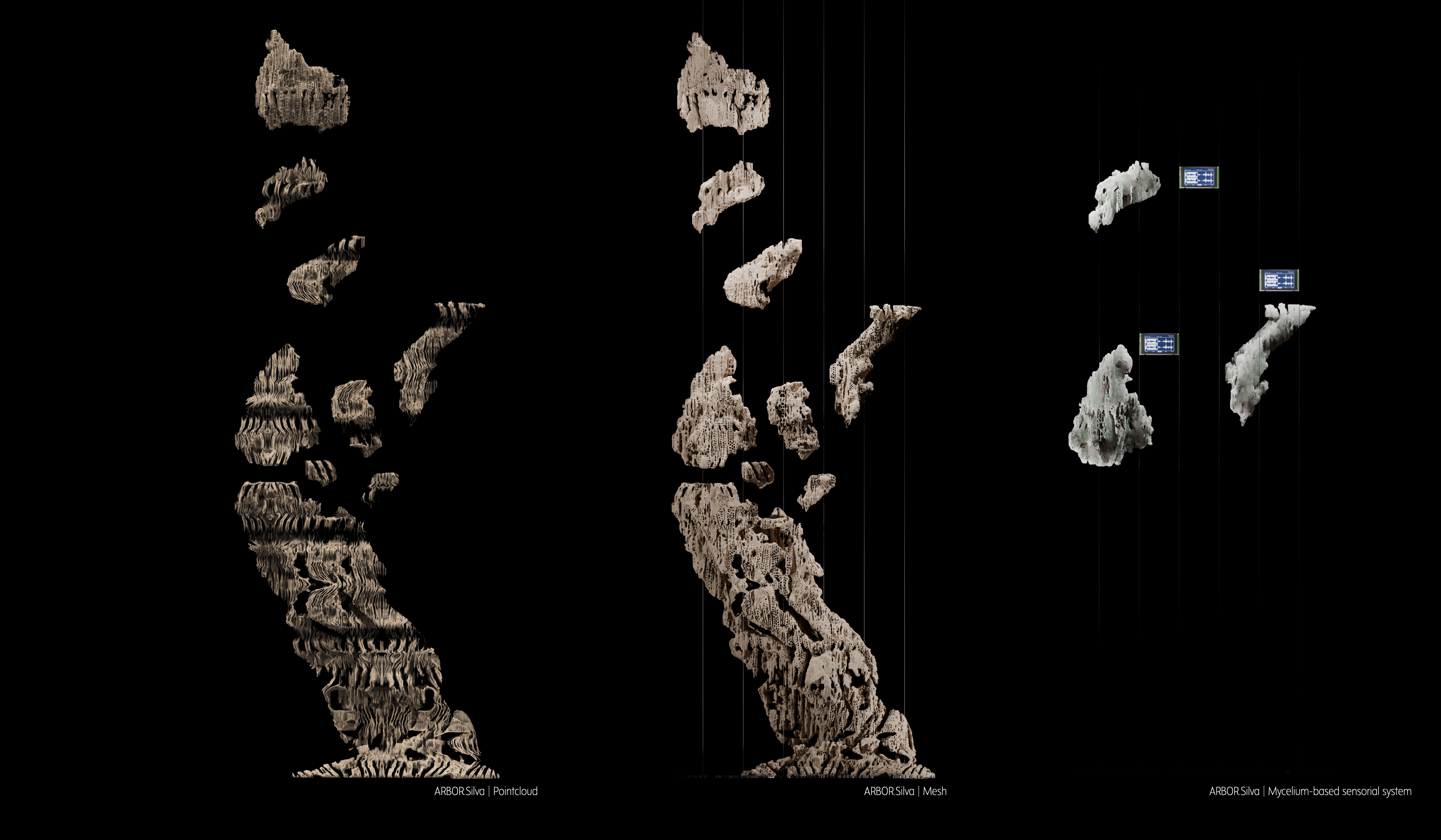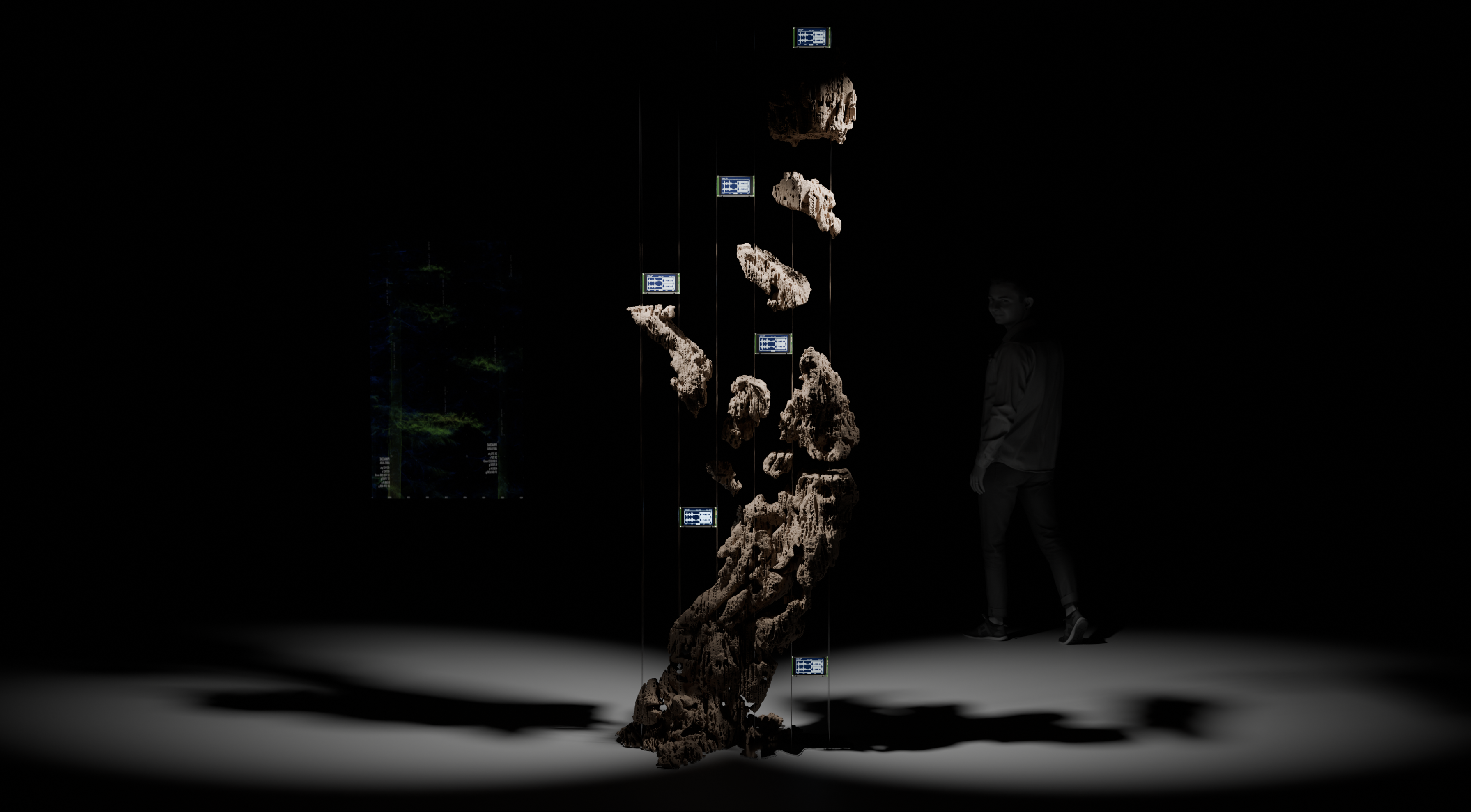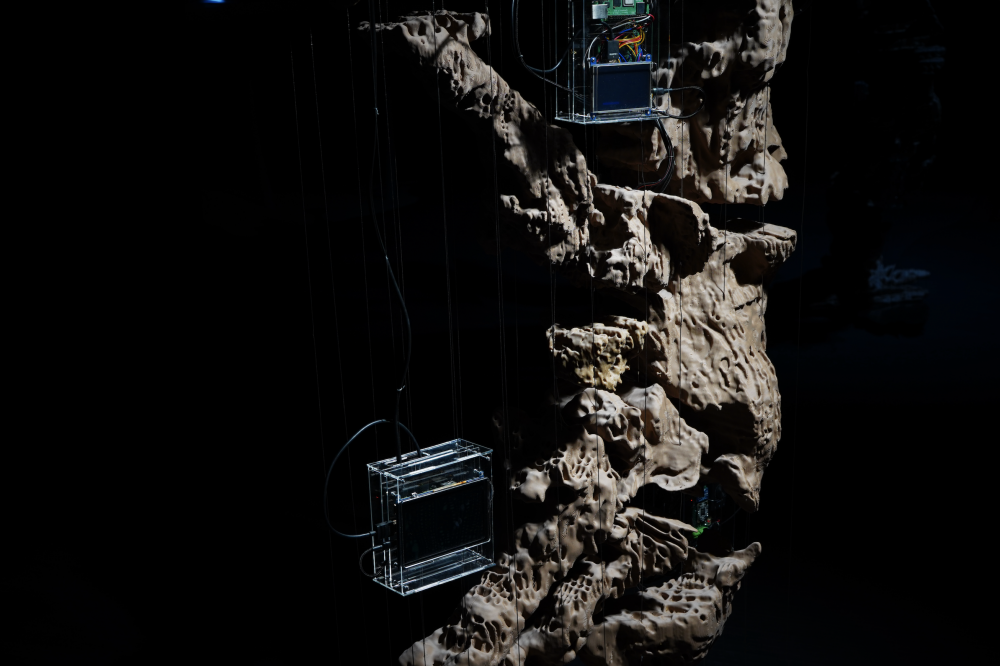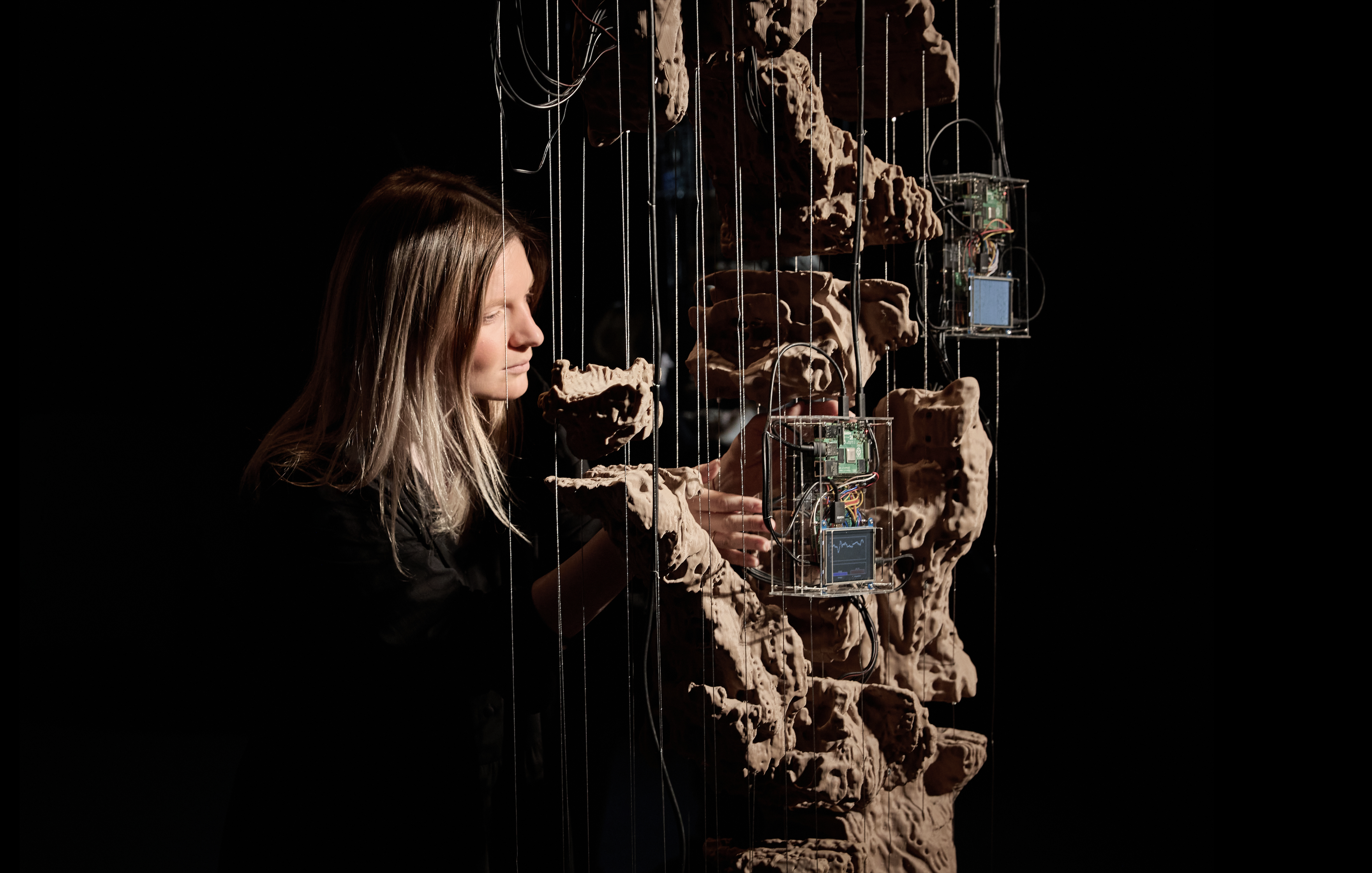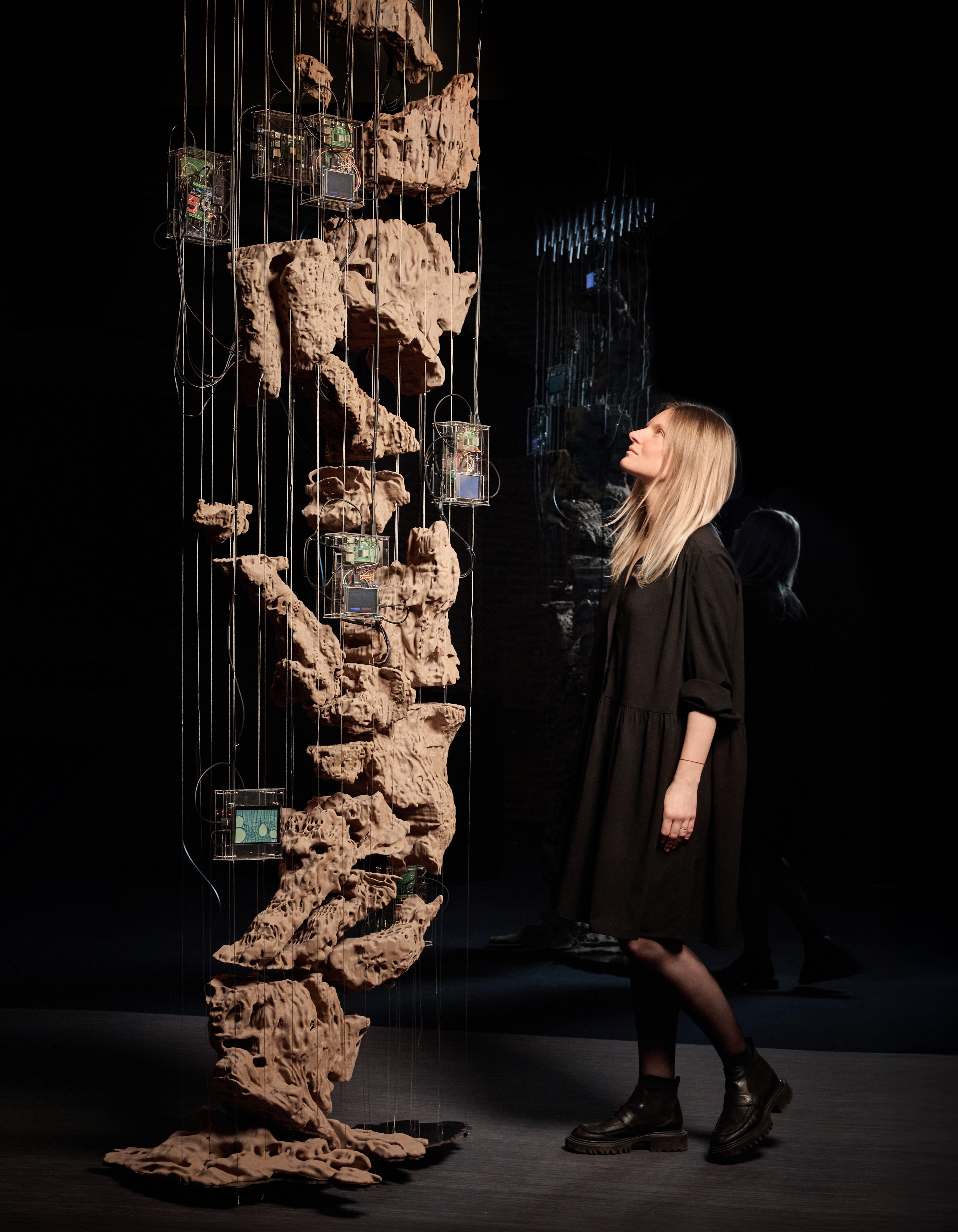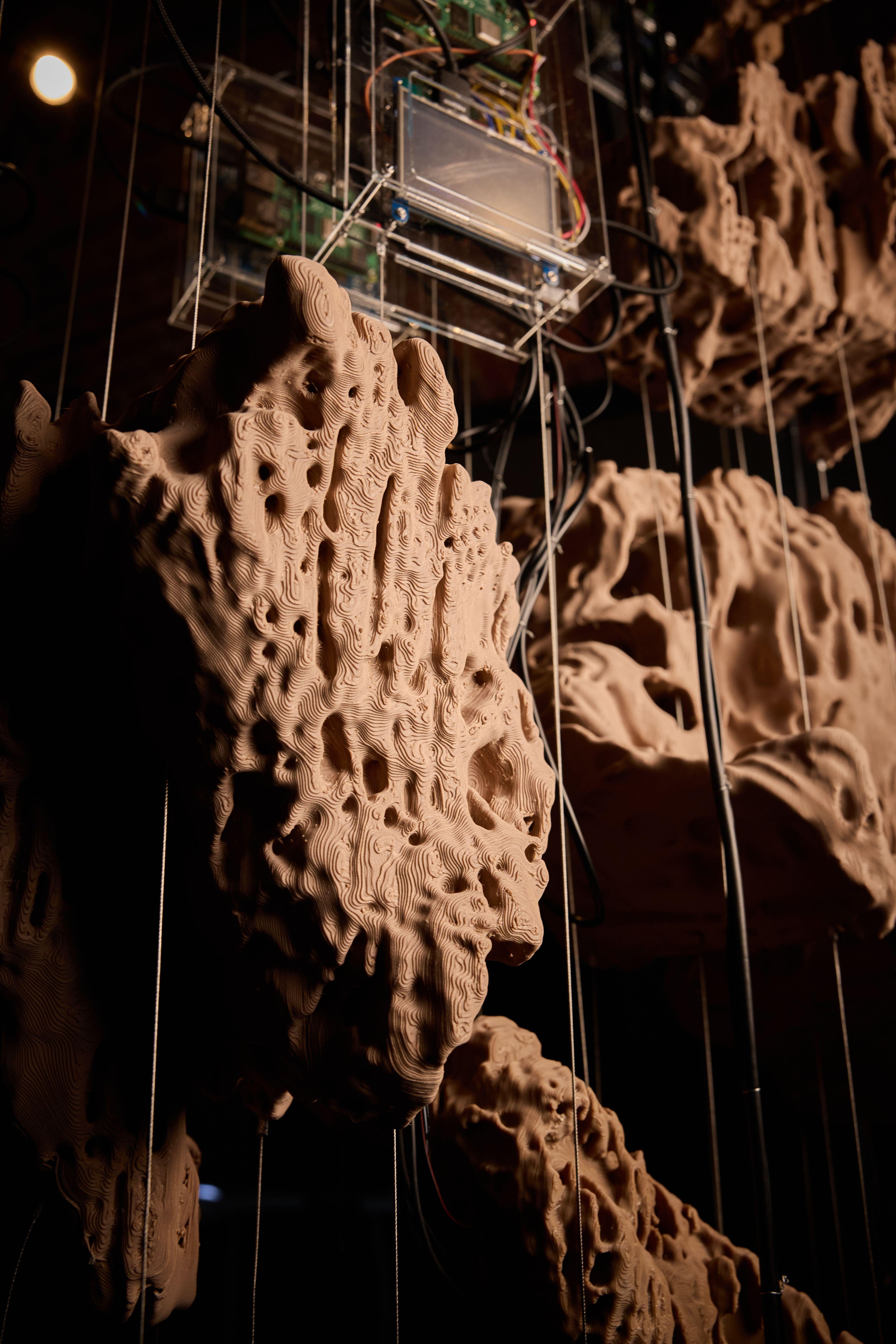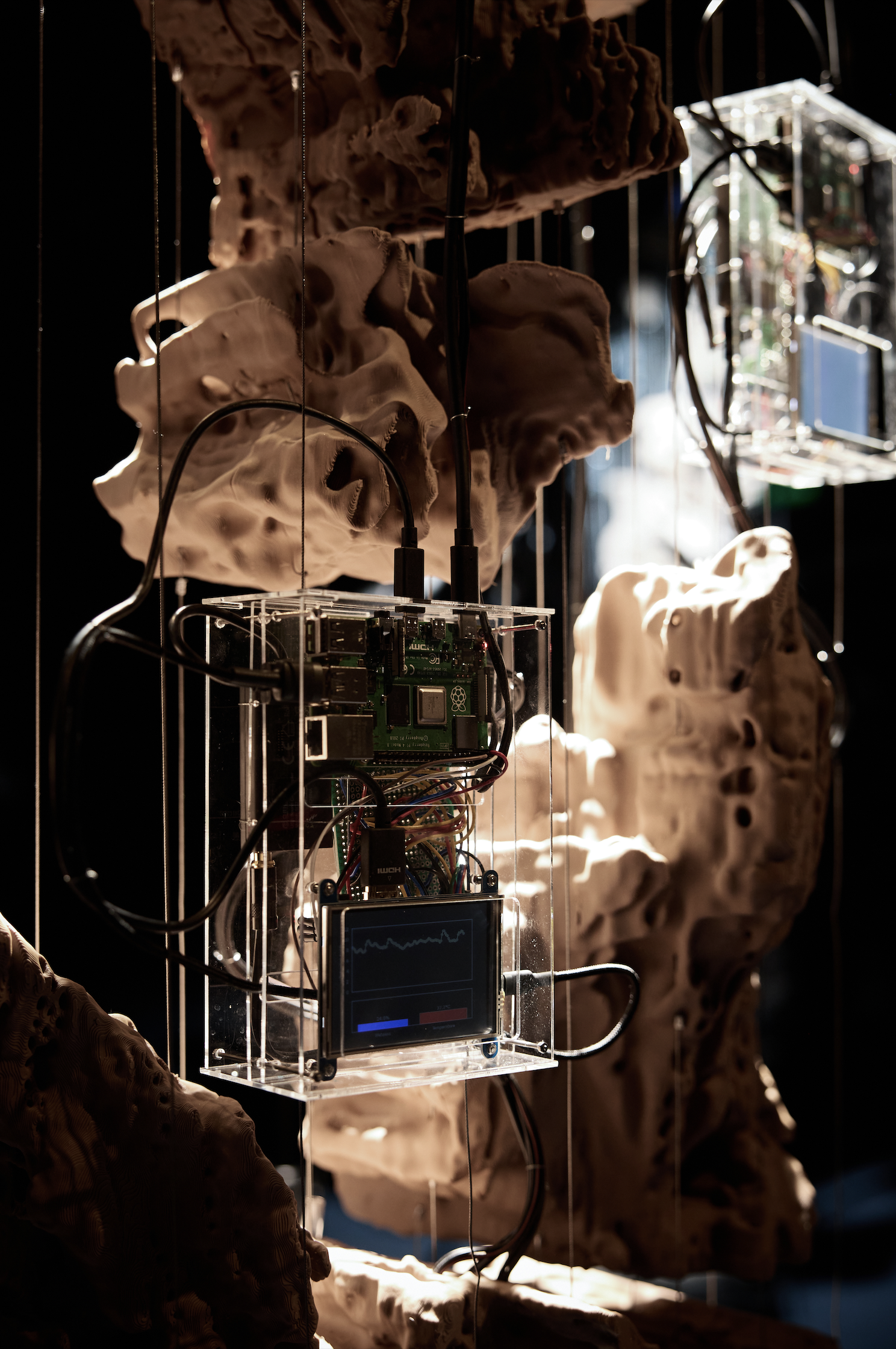ARBOR is a synthetic timber architecture embedded with the intelligence of a living tree. Conceived as a series of cyborganic objects, ARBOR proposes a design methodology that reads the intelligence of wood and rearticulates it through digital and robotic fabrication. Machine learning algorithms trained on timber datasets extract organisational principles from nearly a thousand species, translating the microscopic architecture of wood into a new formal language. These systems preserve the material’s anisotropic nature while enabling high-resolution, biodegradable, carbon-storing structures formed from industrial wood waste. The result is a bio-technological living ecosystem shaped by human, biological and machinic intelligence.
Third iteration of the ARBOR – ARBOR.Silva – explores the possibility of integrating fungal intelligence into synthetic timber structures. Inspired by the mutualistic relationship between trees and fungi, this iteration embeds spores of Pleurotus djamor—pink oyster mycelium —into a printed wooden matrix enriched with nutrient components. As the mycelium colonises the walls of sculptural elements, it operates as a bioindicator, responding to shifts in air quality by altering its growth behaviour.
Recognising the computational capacity of fungi (Dehshibi, Adamatzky 2021), ARBOR.Silva employs mycelium as a living biosensor capable of transmitting information from the biological agent to an automated system. During the exhibition, real-time data is collected and translated into a cyber-organic audiovisual code—broadcast through an array of embedded LCD screens and micro-speakers within the sculptural form.
